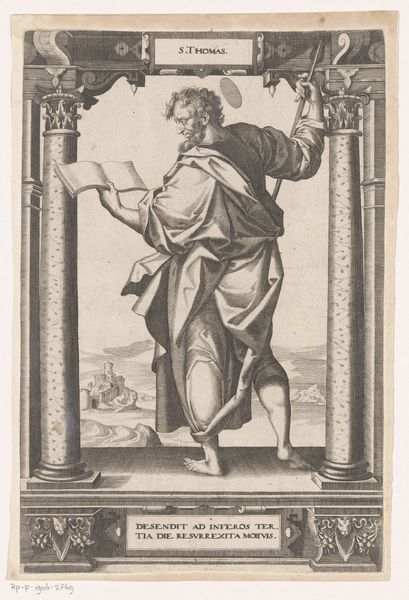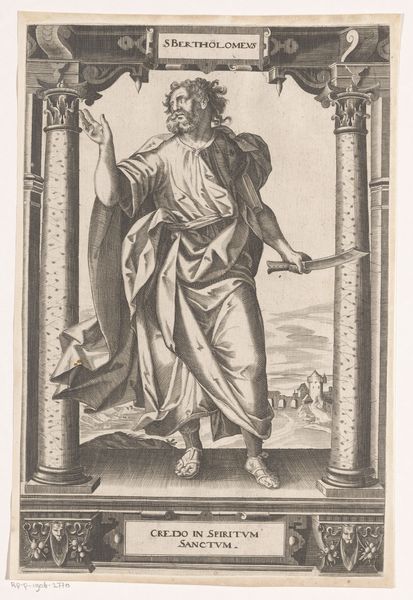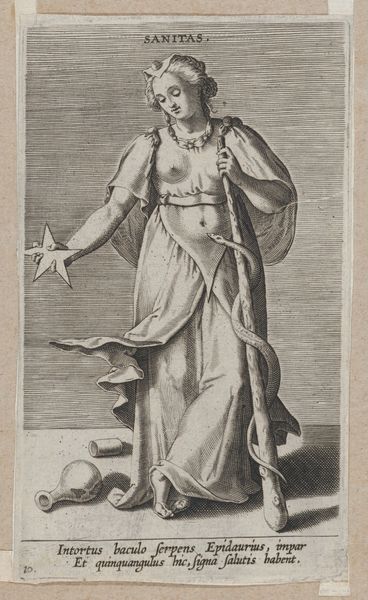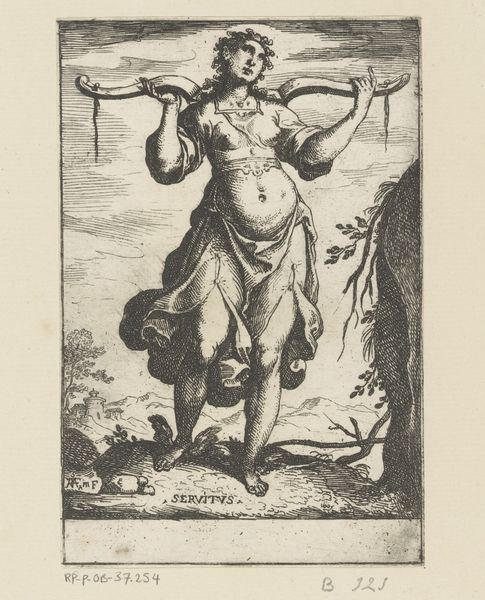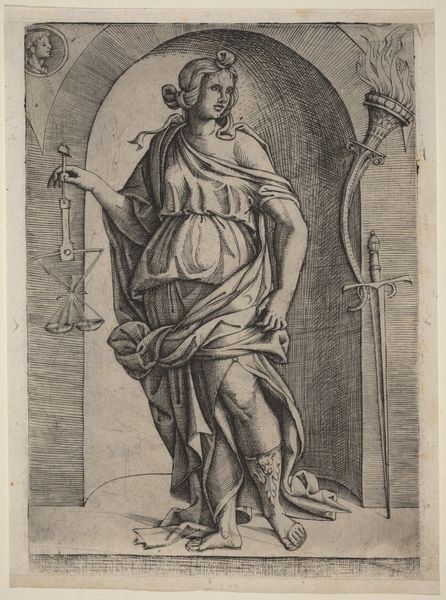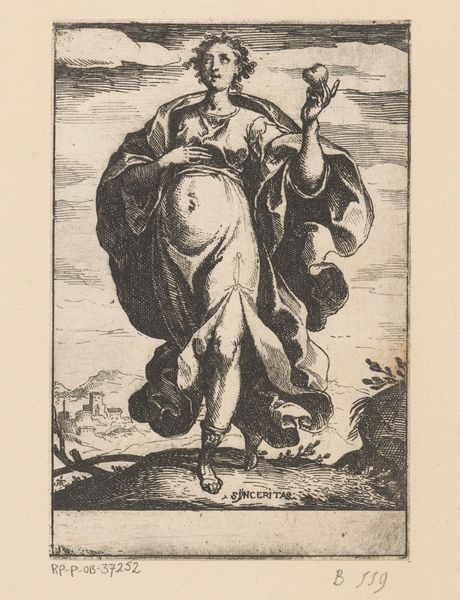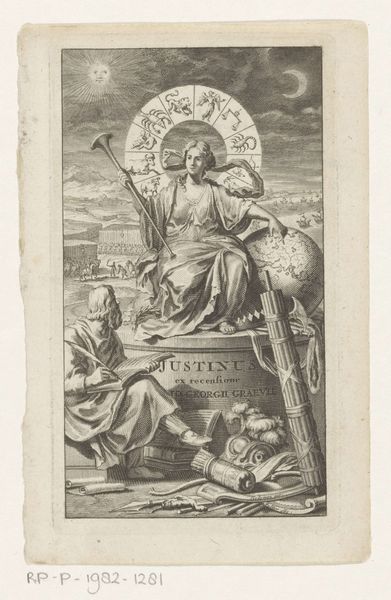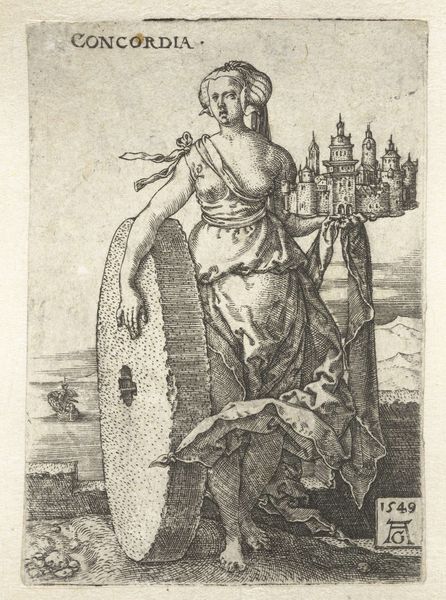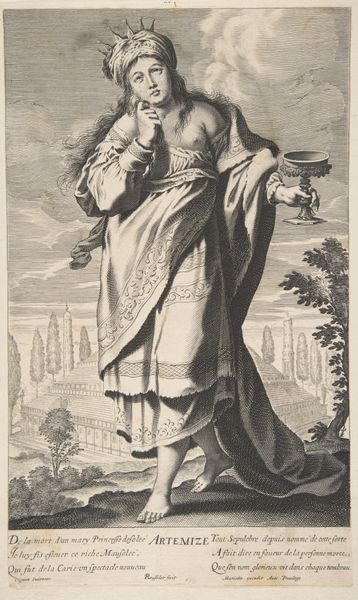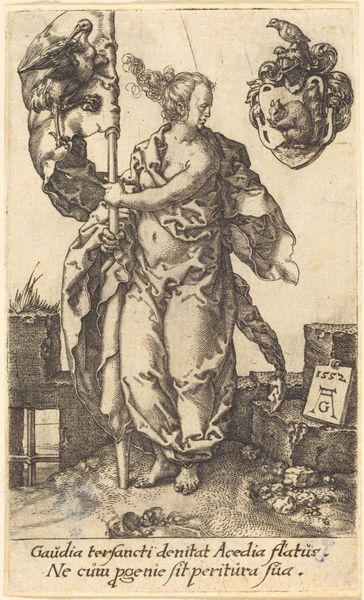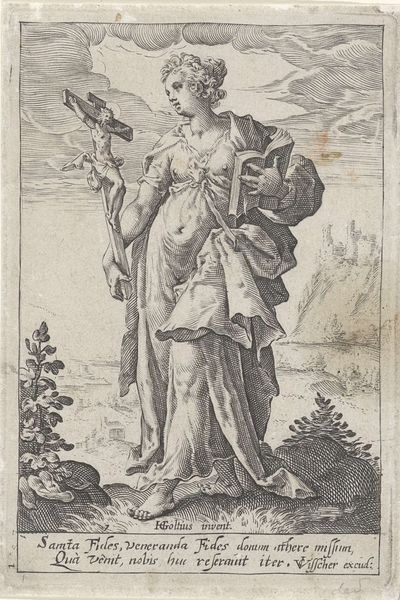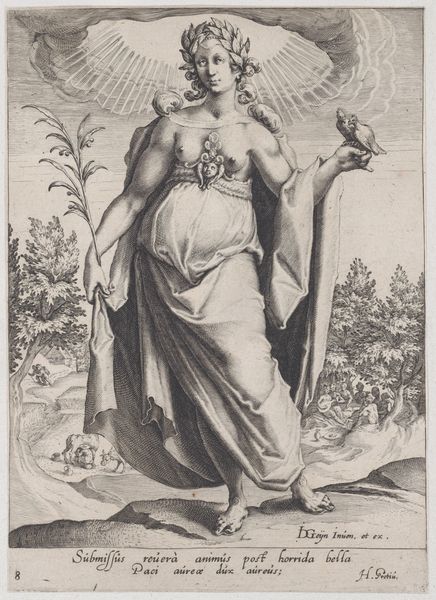
engraving
#
portrait
#
baroque
#
old engraving style
#
caricature
#
portrait drawing
#
history-painting
#
nude
#
engraving
Dimensions: height 320 mm, width 215 mm
Copyright: Rijks Museum: Open Domain
Editor: This is "Andreas de Apostel," an engraving made in 1614. I understand it's housed here at the Rijksmuseum. It looks like a biblical figure, St. Andrew, carrying that X-shaped cross… What strikes me is how the artist focuses on the body’s contrapposto amidst this complex architectural surrounding. How do you interpret this work? Curator: Well, strictly from a formalist perspective, I’m drawn to the strategic arrangement of lines. Notice how the engraver utilizes hatching and cross-hatching to create tonal variations, modeling Andrew’s physique and drapery. Do you see how the parallel lines emphasize volume and texture, and how that meticulousness contrasts with the background elements? Editor: I see that now! Especially in the fabric draped over his shoulder; it’s amazing how the artist achieved that sense of depth. Curator: Precisely! Furthermore, the composition plays with verticals, seen in the pillars, and diagonals, like the cross, creating a dynamic tension within the frame. It isn't merely representational; the formal structure provides a framework for symbolic meaning. How does this emphasis on the graphic qualities speak to you? Editor: I hadn't considered that, but the geometric structures around him amplify that. So, by deconstructing these formal choices, we understand the artist’s intent beyond the subject matter. I will pay more attention to the lines. Thanks! Curator: Indeed. And remember, an image speaks volumes through the formal decisions the artist makes, inviting multiple layers of interpretations that go beyond immediate representational understanding.
Comments
No comments
Be the first to comment and join the conversation on the ultimate creative platform.


